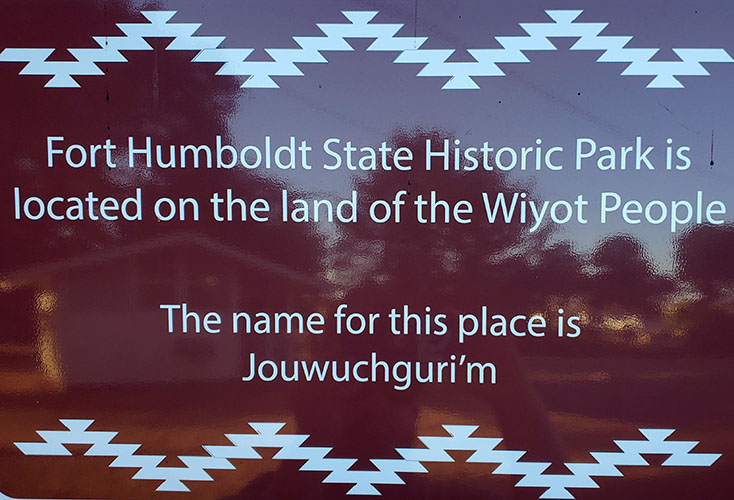Explore Fort Humboldt State Historic Park on YouTube!
School Group Visits
At this time, we are only offering Self-Guided Field Trips at Fort Humboldt State Historic Park. Self-Guided Field Trips are facilitated independently by K-12th grade teachers and educators, college professors and faculty, chaperones, and/or youth program leaders without the support of California State Park staff.
Reservations are available on a first-come, first-served basis. Educators can make reservations by submitting a School Group Reservation Request form (DPR 124) in-person or by mail to the Fort Humboldt State Historic Park District Office. After requests are submitted, park personnel will process and review the request and notify you on whether your request was approved or denied via email correspondence.
For information about school programs, please contact NCRD.Interp@parks.ca.gov.
Site History
Like a large number of historic sites in California, Fort Humboldt shares a complex, and often disturbing history of California. Coupled with and fueled by California’s Gold Rush and Statehood, Fort Humboldt is a site that represents a direct physical remnant of 19th century colonialism.
Acts determined by both Federal and State policies lead to often deadly, life altering consequences for California Native Americans, who have called this area home since time immemorial. The influx of Euro-American immigration to and the military occupation of Humboldt Bay, along with its resource rich surrounding lands lured an ever-growing number of immigrants. As that population grew so to did competition for access to food resources, often resulting in Native people raiding supplies and livestock in order to adapt to the changing conditions.
Conflicts ensued prompting genocidal violence and forced removal of the Native people from their lands to Federal reservations. In addition to the loss of Native lands, State policies created an industry of indentured servitude, an unfree labor practice mirroring slavery.
This practice resulted in the widespread trafficking of Native people creating a cultural diaspora and dilution of this area's Indigenous civilizations. The State's endorsement of indenturing men, women and children knew no bounds throughout this period. All the while there was no legal recourse in place for an Indigenous people, nor consequences to those who committed crimes against humanity.
Sharing only the military piece of the Fort Humboldt history would not come close to capturing all that this place, and this historical period represents. This would lead to an unbalanced perspective of Fort Humboldt's role in this area's development. The inclusion of California Native Americans' lived experiences in this story acknowledges how this historic site represents a painful reminder of that history to their descendants. By sharing the complete story of Fort Humboldt, it is our hope that this will provide healing support to the ongoing cultural revitalization being undertaken by many of the area's Indigenous people and their communities.
Fort Humboldt sits on the ancestral lands of the Wiyot people. Please visit the Wiyot Tribe’s website to learn more. https://www.wiyot.us/

